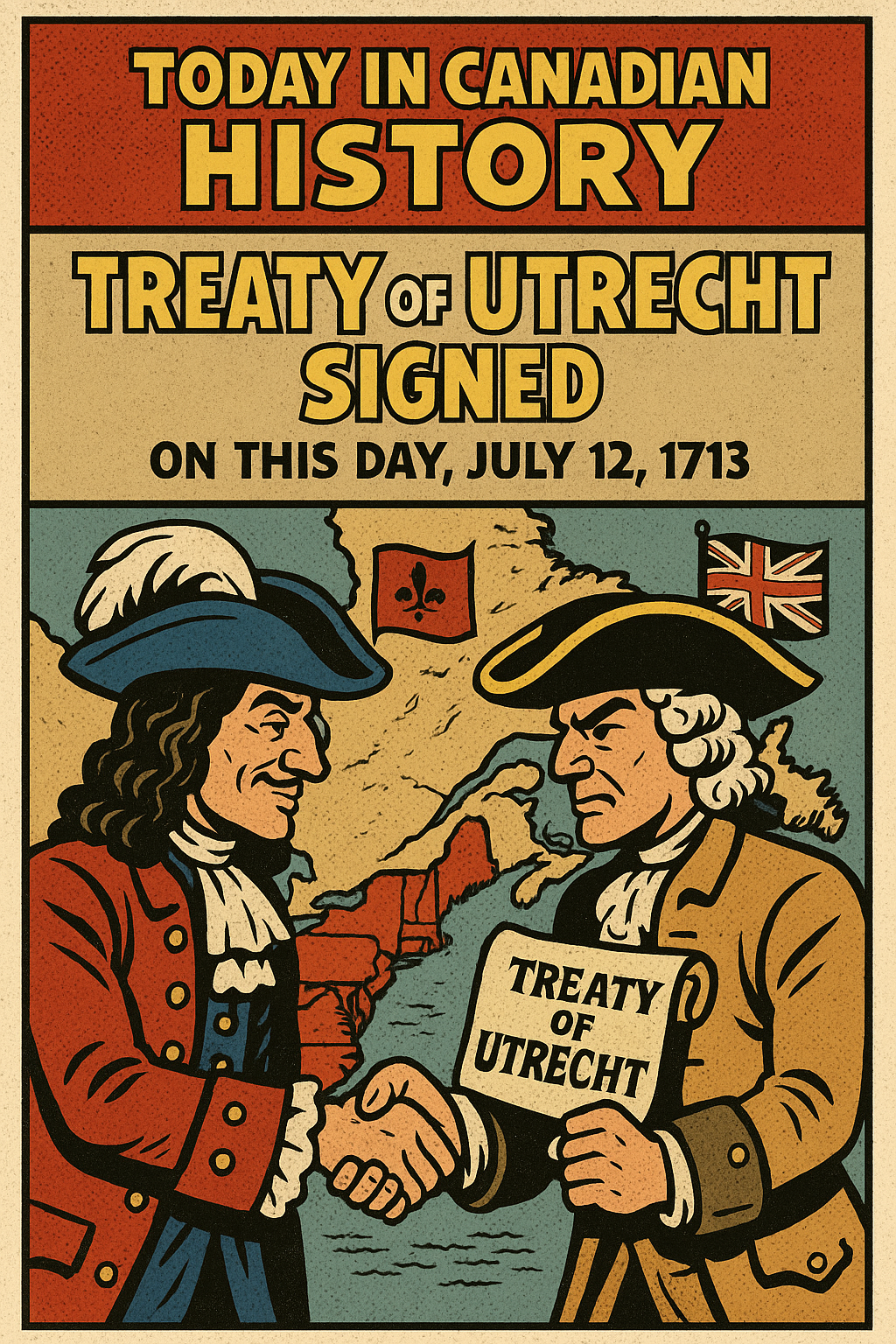
Today In Canadian History July 12: A Stroke of a Pen in Europe, A New Map for Canada: The Treaty of Utrecht
Share
History is often a story of unintended consequences, where decisions made thousands of miles away can reshape the destiny of a continent. Such was the case on this day, July 12, 1713, when the final documents of the Treaty of Utrecht were signed. This complex series of agreements, negotiated in the Dutch city of Utrecht, formally ended the War of the Spanish Succession, a major European conflict. For the people living in the northern part of North America, however, it was a continental game-changer.
The treaty fundamentally altered the balance of power between Great Britain and France. As part of the settlement, a weakened France was forced to make major territorial concessions to Britain. It ceded its claims to the Hudson Bay watershed, ending a long-running trade dispute. It gave up its colony of Newfoundland. And, most significantly for the future of Canada, it handed over "Acadia with its ancient boundaries" (what is now mainland Nova Scotia) to the British.
The vague wording about Acadia's "ancient boundaries" would sow the seeds for future conflict, but the immediate result was clear: the French presence in the region was dramatically curtailed. Thousands of French-speaking, Catholic Acadians suddenly found themselves under British rule, a precarious situation that would ultimately lead to their tragic expulsion, the Grand Dérangement, four decades later. The Treaty of Utrecht didn't end the rivalry between Britain and France in North America; it intensified it, setting the stage for the final struggle for control of the continent that would culminate in the Seven Years' War and the fall of New France. It was a pivotal moment when a European treaty redrew the map of what would become Canada.
